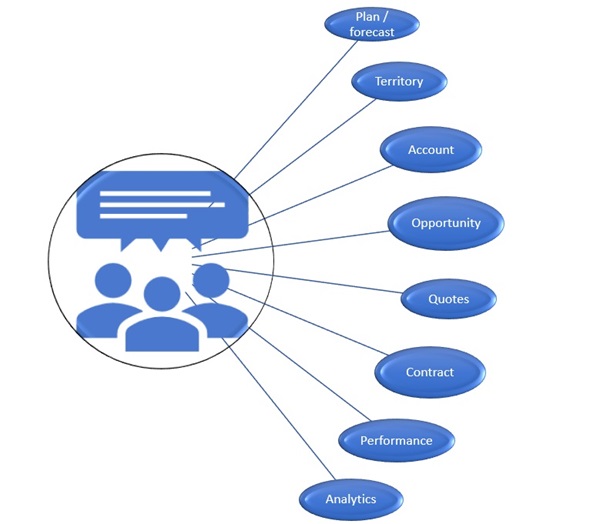CRM software is key to knowing, understanding and predicting what your customers want and will want in the future is vital to the success of any business enterprise. Customer relationship management or CRM software designed to focus on evolving customer relations, keep records, encourage customer communication and gamification. This software is directed to help you anticipate and cater for the needs of a company or business’s current and potential customers in order to grow the relationship value. The sales process is one of the most in integral stages of the software.

The CRM software sales process life cycle using the above software has eight stages. The associated benefits and features are also highlighted below.
1. Sales planning and forecasting:
Enhance performance with coordinated planning and execution of sales activities across all channels.
Provide a complete picture of projected revenue and anticipated sales volume over time.
Increase the accuracy of demand plans and sales forecasts.
2. Territory management:
Territory management is a feature by which you can assist your company in the achievement of its broad objectives. Planning here is the process of determining what you want to accomplish within a specific territory and how you wish to achieve it, using the most effective and efficient ways. The success of the outcome is largely determined by the planning.
These are the benefits that sprout from this stage of the CRM software sales:
Enhances customer coverage
Reduces travel time and selling costs
Provide more equitable rewards
Aids evaluation of sales force
Increases sales for the organization
3. Accounts and contact management:
This is feature of the CRM software that keeps track of people and related activities. It is specialized for sales and service consultants who make repetitive contact with prospective customers. The foundation of a contact manager is a name and address database, from which phone calls, meetings and to-do items are scheduled. The contact manager may also link each record to related e-mail messages and text documents.
4. Opportunity management:
The system stores sales opportunities and related information, each sale lead can be tracked with information such as source, type, worth, status and closure. This solution performs other related tasks such as prioritizing sales calls and generating analyses that assist the fine-tuning of marketing strategies.
5. Quotation management:
Guide sales reps through the product configuration process to ensure that complex product and service recommendations are up customer requirements.
Ensure consistent, accurate and updated prices regardless of the sales channel.
Generate accurate quotes, capture customer orders, confirm product availability, and track orders through to the fulfillment process.
6. Sales contract management:
This stage of the sales process using CRM software is the process of managing contract creation, execution, and analysis for the purpose of maximizing financial and operational performance and minimizing risk. These contracts include employment letters, sales invoices, purchase orders, and utility contracts.
7. Sales performance management:
This stage increases revenue by employing incentive compensation to align the goals of individual sales reps with those of the organization. This is devised to manage compensation plans to retain and motivate your sales reps to succeed allowing them to track performance and simulate potential compensation of deals in the pipeline. The software has built in features to monitor and record individuals performance, against their remuneration and commissions.
8. Sales analytics:
This allows users to monitor the overall health of their business by creating accurate forecasts and proactively monitoring pipeline performance. Also allows for effectively managing budgets, and properly allocating resources to meet revenue goals. This information is crucial to the development of strategic growth plans for organizations.
CRM software helps sales professionals become more efficient and effective through automation and streamlined capabilities. It also provides them with the knowledge needed to acquire, grow, and retain profitable relationships. When the above stages are implemented correctly, utilizing the software, it brings the company closer to achieving its overall performance objectives more smoothly.
